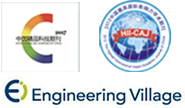Abstract:
Nanozymes are nanomaterials that mimic natural enzyme activity, combining the unique properties of nanomaterials with catalytic capabilities similar to those of natural enzymes. Among various nanozymes, metal organic framework (MOFs) nanozymes, as a new type of biosensing material, have gained significant attention in food analysis. MOFs are an emerging class of porous crystalline materials known for their uniform structures, ultra-high porosity, tunable compositions, and easily functionalized surfaces. MOFs-based sensors have emerged as promising complementary or alternative tools to conventional detection methods due to their high absorbency, strong luminescent properties, and cost-effectiveness. This review summarises the properties and types of commonly used MOFs enzymes and explores their applications in the detection of pesticides, additives, heavy metals, harmful microorganisims and functional ingredients. Finally, we discuss the challenges faced by luminescent MOFs in complex ecviornments and outline propects for future development.


 下载:
下载: